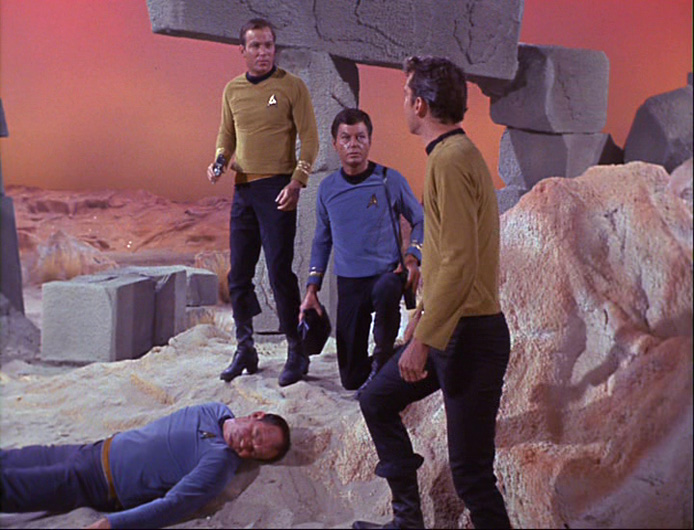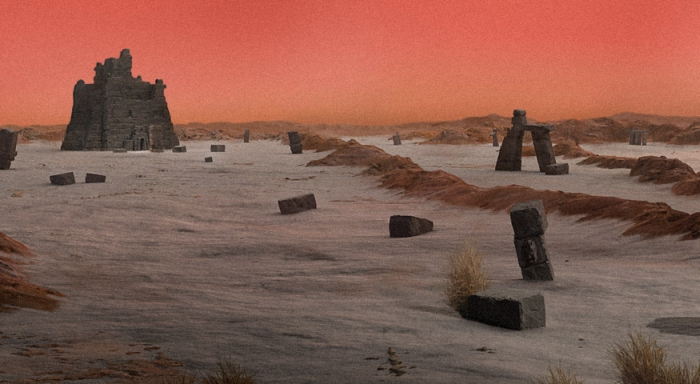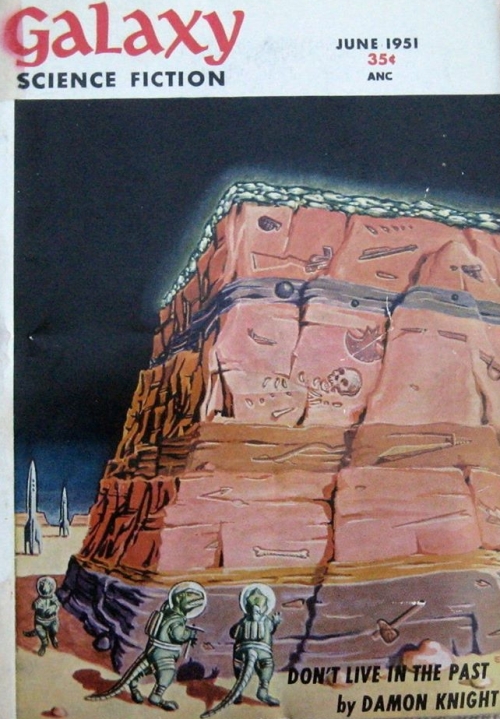“Captain’s log, Stardate 1513.1. Our position, orbiting planet M-113. On board the Enterprise, Mister Spock temporarily in command. On the planet the ruins of an ancient and long-dead civilisation. Ship’s surgeon McCoy and myself are now beaming down to the planet’s surface. Our mission, routine medical examination of archaeologist Robert Crater and his wife Nancy. Routine but for the fact that Nancy Crater is that one woman in Doctor McCoy’s past.”
“The Man Trap” was the first episode ever aired of Star Trek – The Original Series (TOS) on September 8, 1966, even if it was the sixth episode produced. The National Broadcasting Company rejected the original pilot as they wanted an episode featuring a monster in space to get the public’s interest in the new science-fiction series.

In the episode, Captain Kirk and his crew visit the alien planet M-113 to check on an archaeological expedition. The planet’s surface appears at first lifeless. However, ruins seen in the background testify that a long lost civilization once existed here. The planet was also home to a multitude of creatures according to the sculptures and designs left in the architecture that scatters the surface of the now barren world. There remains some plant life, hardy drybrush, and poisonous plants.
The archaeological outpost on the planet M-113 is infiltrated by a mysterious shape-shifting creature that requires salt – the sodium-chloride mineral halite – to survive and is willing to obtain it by any means necessary. Crewman Darnell is the first victim of the “salt-vampire” and also the first “red-shirt” (wearing a blue shirt) to be killed in TOS.

The origin of the salt-vampire remains unknown and it is also never explained if the creature is somehow related to the ancient megalith builders. This poses an intriguing question. Without the ruins, would a hypothetical exo-scientist, as seen in the episode, be able to infer the existence of a former alien civilization?
Earth is the only planet we know for sure can host a technologically advanced civilization, however, buildings and cities are surprisingly short-lived. Even modern iron and concrete resist weathering for just some decades to centuries. Monuments build from sedimentary rocks, like the pyramids, may last some thousand years in dry environments. Reliefs in massive rocks, like Mount Rushmore carved into Harney-Peak granite, may remain recognizable for some hundred-thousand years.

Even if our technological wonders won’t survive millions of years into the future, other traces may remain. In just a few centuries, we have modified more than 70 percent of Earth’s land surface. Humans today move ten times more sediments than all natural processes combined, like landslides or rivers. Since the year 1500 more than three-hundred species of large vertebrates went extinct and many argue that we are witnessing the beginning of a mass extinction event. Earth will need millions of years to recover and replace the lost species.
Since the industrial revolution in the 19th century, humans have modified the concentration and flux of carbon and nitrogen in Earth’s atmosphere. New artificial materials, like plastic, are polluting the environment. Future geologists may find rare traces like “technofossils” – anomalous minerals or unnatural materials like plastiglomerate in the geological record. It is unknown how long such artificial materials will survive in the geological record. If buried in sediments, like plastic fragments on the bottom of the sea, maybe some million years. Eventually, heat, pressure and time will break the molecules apart and erase any direct evidence for humanity’s former presence on Earth.
Chemical signatures preserved in sedimentary rocks, caused by the changes in abundance of certain elements, like carbon (resulting from burning fossil fuels), nitrogen (used as fertilizer to feed seven billion people), radioactive or rare earth elements (used in modern technology), may still be detectable after billion of years. However, there are natural processes that may mimic such anomalous concentrations. The famous Oklo-reactor, a two billion years old uranium ore deposit that experienced a slow nuclear fission, was likely not built by an ancient civilization but formed by microbial activity.
Even climate change alone will not be sure evidence of a technologically advanced civilization. In the past, there were geological epochs with higher concentrations of carbon dioxide. 55 million years ago, during the Paleocene–Eocene Thermal Maximum, over some thousands of years a massive flux of greenhouse gases from the ocean into the atmosphere occurred and Earth’s global temperature rose by 8°C in response. However, the speed humans are changing the climate is unprecedented in the history of the Earth.
Combining various observations, like the rate of changes preserved in the geological record, the presence of anomalous materials, a spike of certain chemical elements and the extinction of species, future alien geologists visiting Earth may realize that a civilization, technologically advanced enough to influence the entire planet, once existed here. Will they find a thin layer of boundary clay, suggesting a sudden catastrophe ending this civilization? Was it a gradual demise following environmental problems? Or did the civilization survive still for thousands of years by adapting or changing its behavior in time? In the stratigraphic record time can be compressed and even future geologist may not be able to clearly distinguish between a sudden event, lasting just some centuries, or a prolonged era of a hundred-thousand years.

References:
- SCHMIDT, G.A. & FRANK, A. (2019): The Silurian hypothesis: would it be possible to detect an industrial civilization in the geological record? International Journal of Astrobiology. Volume 18, Issue 2: 142-150
Ein Gedanke zu „Geological Star Trek Review – “The Man Trap”“
Kommentare sind geschlossen.